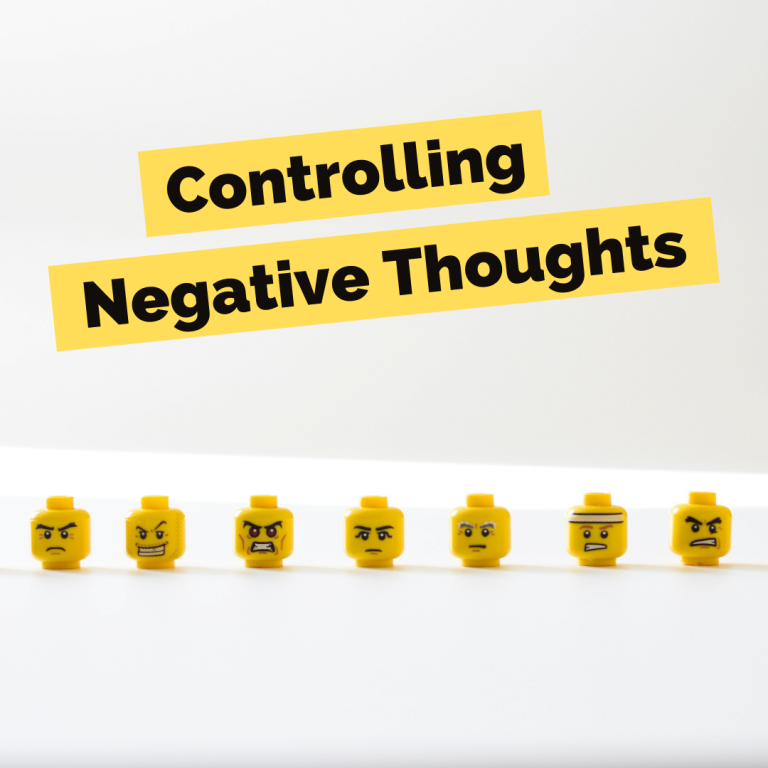When it comes to negative thoughts, we all have that little voice inside our head. You know the one I mean; it sounds a bit like you, warns about impending doom and suffers from "what-if..." syndrome.
Negative thoughts are one of the top five things that I help people with in the work that I do, so I feel qualified enough to say that a) we might not be talking about them but b) they are extremely prevalent!
Where do you fall on the continuum between positive and negative thinking? Negative thoughts are a completely natural fact of life. In our auto-pilot mode, it’s easy to let our thinking go straight to the negative, yet it’s entirely possible to get better at switching to manual to more consciously – and rationally – control our negative thoughts.
This thinking can be damaging enough either towards ourselves, others or our surroundings. When our thoughts then start to influence our feelings, emotions and resulting behaviour, we and those around us suffer even more.

Why do we have negative thoughts?
Most of us know by now that our brains have evolved to keep us safe and alive. The reptilian complex that controls our most basic survival functions is constantly scanning for danger, ready to alert our physiology at a moments notice.
Just this one simple element helps us to understand why negative thoughts show-up so often. If our brain has evolved to protect us in this way, it makes total sense that it’s automatic for us to prepare for the negative, rather than actively assume the positive.
What our reptilian brain is much worse at understanding – particularly in this modern world – is the actual level of threat or danger. This can lead us to ‘disasterising’, giving power to our negative thoughts by building them up before anything has even happened!
Download my ten point plan to build your resilience now
How do negative thoughts show-up?
This could be a never-ending list, partly because negative thoughts are so prevalent, but also because they’re very individual to us and our situation.



Special mention goes to those of us who suffer from the what-if syndrome:



How to reduce negative thoughts?
Controlling negative thoughts isn’t about pretending that the worst never happens. Anyone reading this will have faced personal or professional trauma at some point in their lives.
So, here’s what few people will tell you: we need to listen to that little voice, sometimes. If our highly evolved yet still primitive brain is trying to warn us of impending danger, we should at least sense check the danger rather than ignore it.
With this in mind, it then comes down to managing our negative thoughts much more consciously than when we’re in auto-pilot mode.
1. Begin to notice negative thoughts
Okay, let’s get into this. I’ve already mentioned our auto-pilot thinking mode, so we’re going to begin by getting better at switching to manual and simply recognising when the negative thoughts appear. Do this without judgement or getting frustrated with yourself.
Once you are more consciously noticing the negative thoughts, encourage yourself to stop. Here, it’s only about making a conscious choice to not continue walking the same path with that thought. This can be more difficult than it sounds and telling yourself to stop thinking about it may be tough, but it ties in well with step number two…



2. Replace the negative thought



When you’ve cracked step one – noticing the negative thought – move on to replacing the thought. These first two steps are a hugely popular technique in Cognitive Behavioural Therapy.
Importantly, it’s not necessarily about replacing the negative thought with a positive one. Often there is a positive albeit it can be hard to find, but it’s often there. It can be as simple as replacing the negative thought with a more rational or constructive outlook. Sometimes a simple “I’m going to wait and see what happens” is a totally valid decision in where you choose to focus your energy, rather than “what if…..?!”
3. Reframe the negative thought
Reframing is another highly effective technique that can help to replace negative thoughts. This is where we shift our mindset to help us look at a situation from a different perspective. So instead of “why does this keep happening to me?”, reframing helps it to become “okay this is going to be tough for a while, but I’m going to get there”. Check-out the article on growth mindset for more support and ideas on reframing!
4. Apply logic to the negative thought
Have you ever tried to have a logical argument with your illogical brain? It can be hilarious! Another thing that the brain is terrible at is telling the difference between real and imagined danger, but the resulting emotions feel completely real. Remember that your brain is simply doing its job to keep you alive. Switch to manual and change the internal dialogue running through your head. Ask yourself – and answer them too – questions like:
Has this ever happened before?
We often spend 90% of our time worrying about what might happen, when the terrible thing often happens for only 10% of the time.
Has this ever gone okay, well or brilliantly before?
The brain is so busy warning us about danger that it’s much less good at reminding us when everything went fine before.
What if the worst does happen?
The chances are that you’ll learn from it and most importantly you’ll get through it and the world will still be turning
5. Separate fact from fiction
Another feature of that illogical brain of ours is that when not presented with the information, our brain creates the information. Just think about all the times you’ve jumped to a totally wrong conclusion about someone or something. Do the work to really separate what you actually know from what you think you know. Fill in the blanks where you can and keep an open, non-judgemental mind towards the unknown rather than create your own fictional story.








